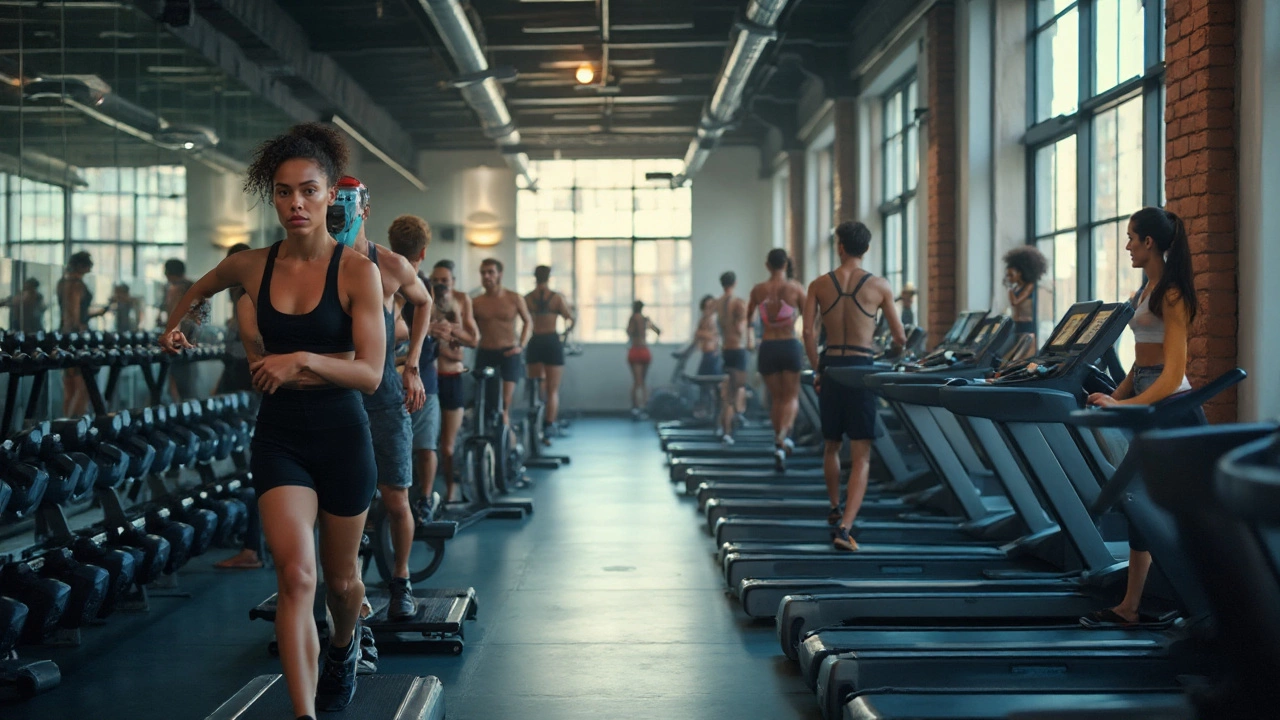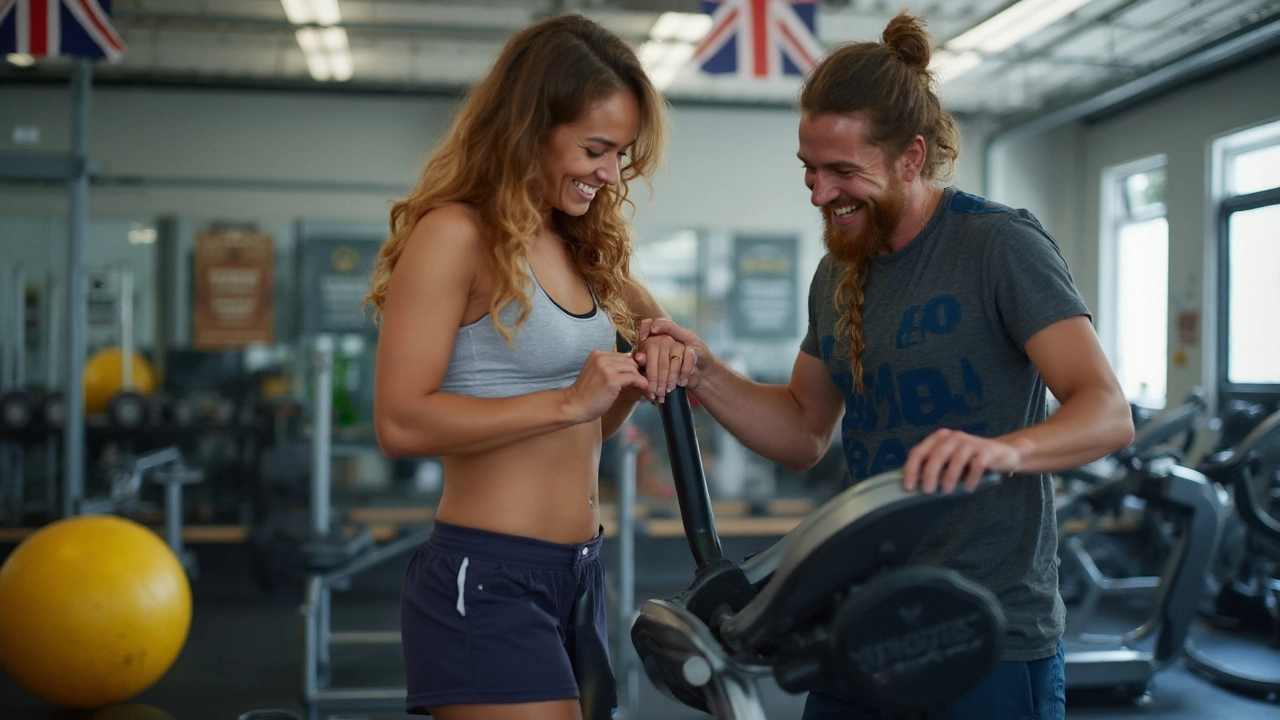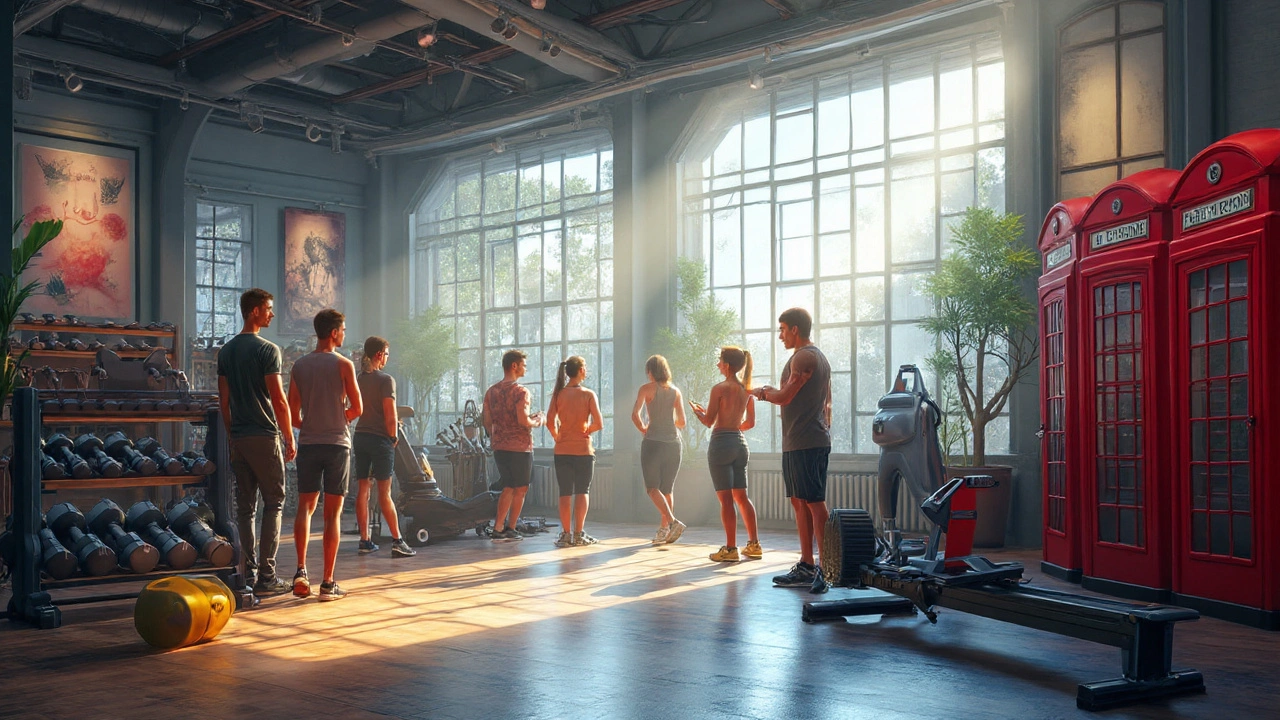
What’s more intimidating: walking into a crowded gym full of high-tech machinery, or standing there wondering what half the stuff actually does? Most of us have had that ‘I hope nobody’s watching me try to figure out the leg press’ moment. But every piece of gym equipment is a tool designed to help you move better, get stronger, or just feel awesome about your progress. The gym isn’t just rows of dumbbells and mysterious machines; it’s an arsenal of body-boosting gadgets—some high-tech, others beautifully simple. But which gear does what, and how do you find what fits your goals (and your personality)? You’re about to find out.
Cardio Machines: Boosting Your Heart, Burning Calories
Step into any commercial gym and the first thing you’ll probably spot are the cardio machines—think treadmills, ellipticals, bikes, and rowing machines. These are classics for a reason. They’re not just for torching calories; they train your heart and lungs to handle more and more with each workout. The treadmill? It’s the champion for anyone who loves to run but hates unpredictable weather. With features like programmable inclines, heart rate monitors, and safety stops, treadmills allow you to push intensity or take it easy at your own pace.
The elliptical trainer has this magical reputation for being ‘gentle on your joints.’ That’s because it mimics walking or running without pounding your knees on a hard surface. It’s a favorite not just for people rehabbing injuries, but for anyone who wants a total body burn—the handlebars force your arms to join the party. Stationary bikes, from recumbent to upright, are all about low-impact cardio with a lower risk of overuse injuries. They’re especially good if you’re working with hip, knee, or lower-back issues.
Rowing machines deserve special love. They’re actually full-body workouts in disguise—engaging your legs, core, back, and arms in every stroke. Just twenty minutes on a rowing machine can leave even an experienced athlete winded. Plus, almost any age or fitness level can use them.
You’ll also see stair climbers and stepmills, which are basically never-ending staircases and perfect for glute and quad training. If you’re up for a challenge, try a session on the VersaClimber, which works your entire body vertically. Newer gyms even have ski-ergs, which replicate cross-country skiing—talk about upper-body cardio!
What’s wild is just how much some of these machines track. Touchscreens can show everything from step counts to your “power output” in watts. In 2024, Statista reported the global gym equipment market had topped $11B, and cardio gear makes up a huge slice of that pie. People simply love ways to sweat indoors, rain or shine.
Strength Training Equipment: Building Muscle, One Lift at a Time
If cardio machines are crowd-pleasers, strength equipment is where real physical transformation happens. Free weights are classics: you’ve got dumbbells, barbells, and kettlebells, which all offer a nearly limitless variety of exercises. Dumbbells let you train each side of your body independently—meaning more symmetrical muscle growth and a way to train around injuries. Barbells, on the other hand, are kings of efficiency; you can load them up for classic moves like the squat, deadlift, or bench press, and recruit every muscle in your body if you do them right.
Power racks and squat racks are essential for safety when you’re lifting heavy. Adjustable pins can stop a loaded barbell if you miss a rep. You’ll spot these racks set up for everything from chin-ups to heavy barbell complexes. Kettlebells seem basic, but they’re surprisingly versatile. They’re amazing for ballistic moves like kettlebell swings, Turkish get-ups, or overhead carries. In fact, the American Council on Exercise published a study showing a 20-minute kettlebell workout can burn roughly 400 calories—and tax your strength, stability, and grip.
Then there are selectorized weight machines, with their stacks of weights and simple pin systems. These are a lifesaver for beginners, isolating muscle groups and keeping you in the proper form. They’re especially popular during peak hours, because you can cycle quickly without loading and unloading weight plates. Cable machines (or cable towers) go a step further, offering almost infinite exercise permutations. Want to hit your chest, back, arms, or even legs? Just change the handle and pulley height, and you’re set.
Pulldown machines, leg extension and curl benches, Smith machines, and hack squat machines round out the arsenal. Each is designed to hit specific muscle groups with a controlled movement, minimizing the “cheat” factor often seen with free weights. And these days, you’ll find plate-loaded machines that combine the best of both worlds—the stability of a machine but the custom resistance load of free weights.
For anyone focused on progressive overload—the science-backed key to getting stronger—you want equipment that offers small, trackable jumps in difficulty. Many gyms now stock microplates (as light as 1/2 lb) to help with those tiny and essential increases in strength that add up over time. For safe spotting and quick transitions, gym chains even offer machines where you can adjust the weight mid-set with just a flick.

Functional Training and Bodyweight Gear: Move Better, Build Power
Modern gyms don’t stop at dumbbells and treadmills. The functional training revolution introduced gear designed to mimic the way your body actually moves out in the real world, not just on a rigid track. Medicine balls, sandbags, battle ropes—they all add an unpredictable element to workouts. Medicine balls build explosive power and coordination, especially with slam throws or rotational twists. Battle ropes? A few minutes of those and your entire upper body (and heart) will be on fire.
Suspension trainers like TRX have exploded in popularity, and with good reason. They use your bodyweight and gravity as resistance, so just shifting your angle unlocks a harder or easier move. They’re portable, too, so lots of people have started using them at home or even outdoors. For agility, plyometric boxes and agility ladders spark fast footwork and explosive jumps—fantastic for athletes or anyone who just wants to feel light on their feet.
Plyo boxes can be made of foam, wood, or metal, and today’s commercial gyms offer them in stackable, padded varieties to reduce shin bruises (we’ve all felt that pain). Gymnastic rings are moving beyond CrossFit boxes and into mainstream facilities, giving users the option to try dips, pull-ups, or even advanced holds like muscle-ups. Ever try a pull-up on rings? It makes the standard bar seem easy.
Resistance bands come in every size and strength. They’re beloved for adding or reducing resistance in almost every move. Use a heavy band for assisted pull-ups, or grab a light one to roast your glutes with lateral walks. Sliders and ab wheels are cheap, simple tools that hit your core and challenge your stability. Even stability balls, which might look like bouncy toys, are actually fantastic for core work and physical therapy. In fact, Mayo Clinic recommends stability balls for anyone recovering from back injuries, since they force those small stabilizer muscles to engage.
Let’s not forget those wall-mounted rigs that dominate some corner of every modern gym. These have hooks for resistance bands, pull-up bars, dip handles, and sometimes even monkey bars—just to channel your inner kid while building serious grip and back strength.
Specialized Zones and Equipment: Extras for Every Athlete
Most gyms carve out dedicated spaces for stretching, mobility, or recovery. Foam rollers and massage sticks are the go-to tools here. They help loosen tight muscle tissue and speed up recovery after tough sessions. If your gym owns vibrating foam rollers or percussion guns, give them a try—they really do help with sore muscles, according to research published in the Journal of Sports Science & Medicine in 2023.
Dedicated Olympic lifting platforms are a staple for serious lifters. These protect the floor (and your ears) during heavy drops, and they’re usually paired with bumper plates—rubber-coated weights designed to bounce when dropped. Chalk stations might seem odd at first, but for anyone lifting heavy or swinging kettlebells, that grip boost can be a game changer.
Power sleds are making a comeback, and pushing or pulling one down a length of turf is a surefire way to build explosive lower body power, improve conditioning, and hammer out-of-breath easily. You’ll also spot specialty bars—trap bars, Swiss bars, safety squat bars—that change the feel or mechanics of classic lifts, making each suitable for different body shapes or injury histories.
If group training’s your thing, modern gyms stack racks full of body bars, aerobic steps, resistance loops, lightweight barbells, and tons of mats. Spin studios hold fleets of stationary bikes with digital screens that stream virtual rides. HIIT rooms are packed with everything from rowing ergs to air bikes (the legendary “assault bikes” everyone loves to hate), slam balls, and plyo hurdles.
Check out this chart for a quick glance at key gym equipment and what they’re best used for:
| Equipment | Best Use | Fun Fact |
|---|---|---|
| Treadmill | Cardio, Running | The first treadmill was a torture device in UK prisons! |
| Kettlebell | Strength, Cardio | Originated as a counterweight for Russian farmers’ goods. |
| Row Machine | Full-body Cardio | Simulates actual rowing—used by Olympic teams. |
| TRX | Bodyweight/Flexibility | Created by a Navy SEAL for training on the go. |
| Foam Roller | Recovery/Mobility | Self-massage boosts blood flow post-workout. |

Tips for Choosing and Using Gym Equipment Effectively
Walking into a gym for the first (or fiftieth) time doesn’t have to feel overwhelming. Start by thinking about your main goals: are you there to build muscle, boost endurance, or just move better? If you’re new, weight machines can help you learn safe movement patterns. Don’t chase the fanciest, flashiest gear—stick to a few basics and master them first. Free weights may look intimidating, but learning the right form with lighter loads makes more difference than using heavy weights with lousy technique.
Many modern gyms offer intro tours or personal training sessions—use them, even if you’re shy. Trainers can show you how to adjust seats, pick weights, or tweak machines to fit your height and mechanics. Don’t forget to wipe everything down before and after use; it keeps things sanitary and, honestly, it’s just good gym karma. Following posted instructions or watching a quick tutorial on your phone can help, especially with unfamiliar machines.
If you’re training for a sport or a specific goal, look out for gear that mirrors those movements—a skier will love the ski-erg, while a basketball player benefits from agility ladders or plyo boxes. For fat loss, combine strength training with short bursts on cardio machines (rowers or air bikes are brutal and effective). For muscle gain, focus on progressive overload and compound lifts: squats, bench presses, deadlifts.
Hydration is your best friend at the gym. You lose water quickly, especially during cardio or heated group classes. According to a 2024 review in the journal Medicine & Science in Sports & Exercise, even mild dehydration can reduce your performance on endurance machines by 10%.
Finally, trust your instincts and body. If an exercise or machine feels wrong or causes pain, stop and ask for help. Consistency matters way more than chasing every new device. And remember—nobody at the gym was born knowing how to use this stuff. Even regulars started with awkward moments and wobbly reps.
